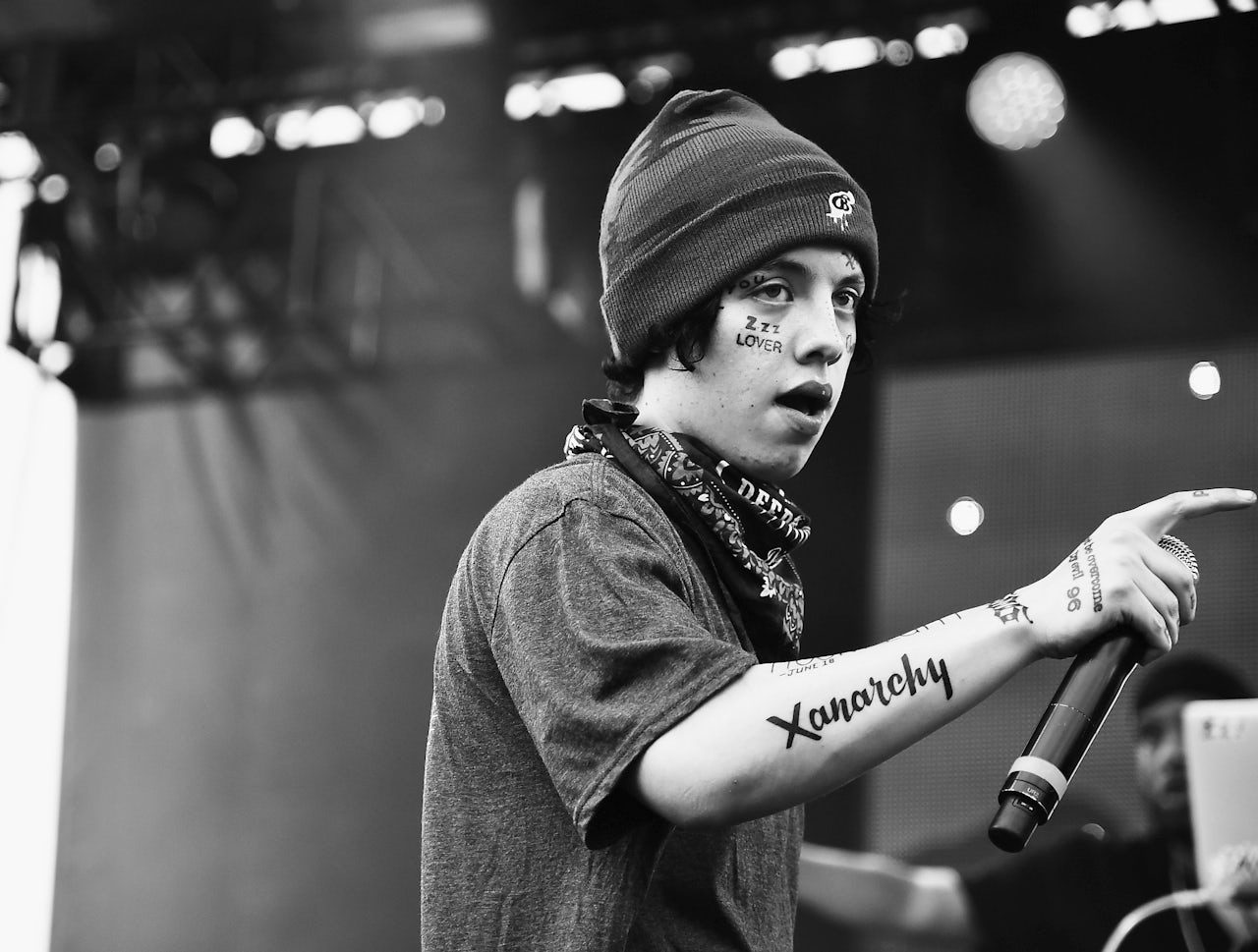Here’s what we know: On Monday, September 25, SoundCloud rapper Lil Xan posted on his Instagram that he’d eaten “too many Hot Cheetos… and it ripped something in [his] stomach open.” According to Xan, he was in the hospital and “puking blood” thanks to a bout of over-snacking.
A couple more things you should know: Lil Xan used to date Miley Cyrus’ sister Noah, has a lot of unwise facial tattoos, and makes slurry, drugged-out mumble rap beloved by theoretically stoned teens and hated by definitively washed adults. If you’re reading this and asking “who’s Lil Xan,” congratulations: You are so much closer to death than you knew. Also, Flamin’ Hot Cheetos have been a known irritant for quite some time, because — surprisingly! — humans did not evolve to properly digest mass-produced corn sticks coated in unnaturally red chili dye. Because Lil Xan is rich and perpetually on his fuckshit — to use a scientific phrase — it’s not entirely implausible he’d down the Cheetos en masse with no regard for his health, and soon find himself on the way to the emergency room.
On the other hand, let me suggest this: Lil Xan’s “trip to the hospital” is nothing more than a viral marketing campaign for the Frito-Lay / PepsiCo-produced crunchy snack treat with a fiery bite. I know what you’re thinking: Why would Frito-Lay want their product to be associated with a potential trip to the hospital and stomach bleeding? Why would the president of Cheetos, Chester Cheetah, allow his snack to be tainted by such a rumor? But there is a simple answer.
This week, the news received dozens of mentions from outlets such as Fox News, The BBC, New York Magazine, Billboard, SF Gate, The New York Post, and USA Today, all of whom uncritically relayed the news, occasionally with a “Lil Xan claims” to mitigate the possibility he was making it up. As the news is primarily created by old people, these items all carried a basic throughline: Look at this dipshit doing dipshit shit. This, to be fair, is an understandable reaction. But you know who prides themselves on doing dipshit shit, to the consternation of adults? Teenagers — aka the main audience for Lil Xan’s music, and the people most likely to purchase Flamin’ Hots without looking at the nutritional label and going, “Oh, holy shit.”
In a Venn diagram with DOING STUPID SHIT on one side and HIGHLY SUSCEPTIBLE TO ADVERTISING on the other, teens would be smack dab in the middle. By positioning Flamin’ Hot Cheetos as an edgy and possibly dangerous snack (a snack which popular rapper Lil Xan happens to love so much that he literally overdosed on them), Frito-Lay makes its cheesy puff nearly irresistible to anyone under the age of 20. The product takes on an aura of danger, like Tide Pods or modern-day Pop Rocks. You could actually die from eating these! Your parents will lose their minds as you puke lava gunk into a toilet. You will have a great story to tell your friends the next week, when you’re back from the emergency room. Like Lil Xan, I was back on my fuckshit.
We know that Soundcloud rappers have no problem selling out to mass market food brands (see Lil Yacthy’s Sprite campaign, for example), so Xan’s involvement in such a scheme wouldn’t be tremendously surprising. And since rappers of Xan’s ilk tend to have an air of violence, drug abuse, and a kind of lol-nothing-matters-cum-Jackass joie de vivre, the whole thing feels thematically right. And because companies are increasingly looking for native advertising aimed at tricking the consumer into believing they are just going about their day, instead of being bombarded with directives to buy, buy, buy at every living moment, it seems like this would be a way more effective promotional strategy than purchasing some print ads in the magazines that nobody under the age of 50 reads, anyways.
Now of course this theory could be completely wrong. But what if it isn’t? If you have a tip, we’re at tips@theoutline.com.

